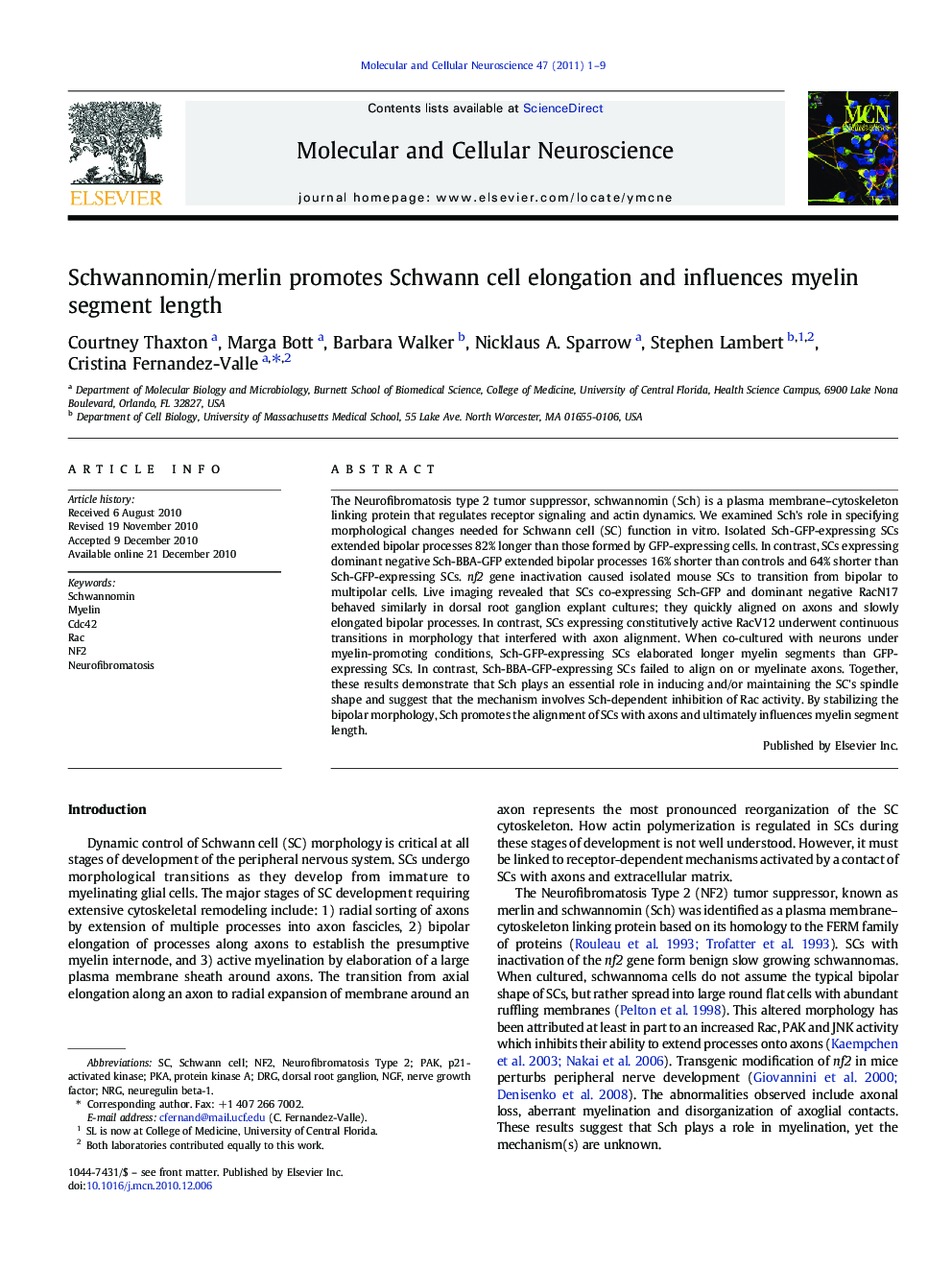| Article ID | Journal | Published Year | Pages | File Type |
|---|---|---|---|---|
| 2198724 | Molecular and Cellular Neuroscience | 2011 | 9 Pages |
The Neurofibromatosis type 2 tumor suppressor, schwannomin (Sch) is a plasma membrane–cytoskeleton linking protein that regulates receptor signaling and actin dynamics. We examined Sch's role in specifying morphological changes needed for Schwann cell (SC) function in vitro. Isolated Sch-GFP-expressing SCs extended bipolar processes 82% longer than those formed by GFP-expressing cells. In contrast, SCs expressing dominant negative Sch-BBA-GFP extended bipolar processes 16% shorter than controls and 64% shorter than Sch-GFP-expressing SCs. nf2 gene inactivation caused isolated mouse SCs to transition from bipolar to multipolar cells. Live imaging revealed that SCs co-expressing Sch-GFP and dominant negative RacN17 behaved similarly in dorsal root ganglion explant cultures; they quickly aligned on axons and slowly elongated bipolar processes. In contrast, SCs expressing constitutively active RacV12 underwent continuous transitions in morphology that interfered with axon alignment. When co-cultured with neurons under myelin-promoting conditions, Sch-GFP-expressing SCs elaborated longer myelin segments than GFP-expressing SCs. In contrast, Sch-BBA-GFP-expressing SCs failed to align on or myelinate axons. Together, these results demonstrate that Sch plays an essential role in inducing and/or maintaining the SC's spindle shape and suggest that the mechanism involves Sch-dependent inhibition of Rac activity. By stabilizing the bipolar morphology, Sch promotes the alignment of SCs with axons and ultimately influences myelin segment length.
